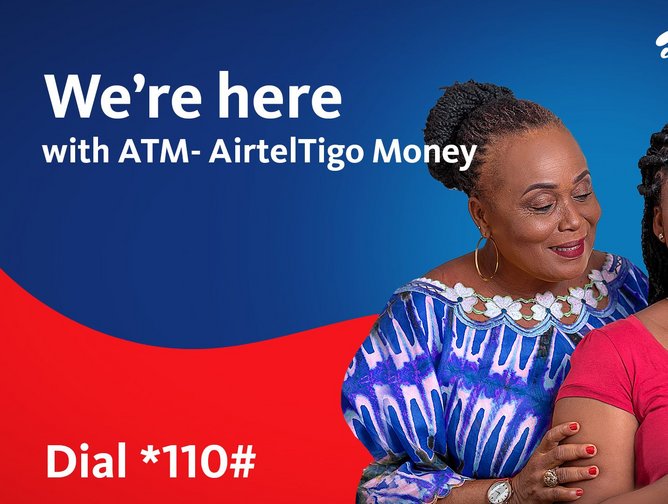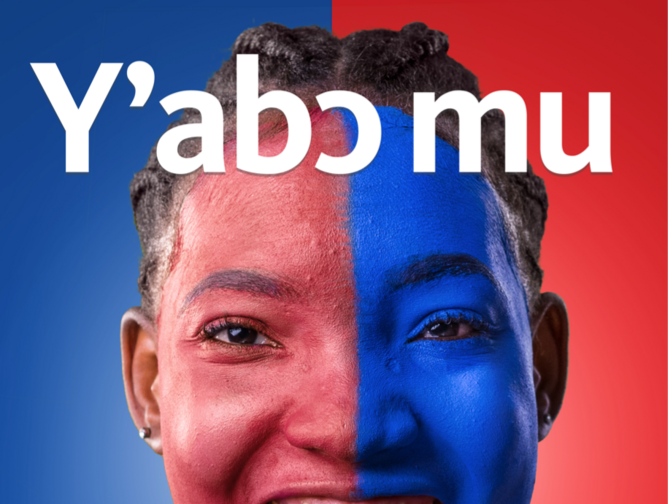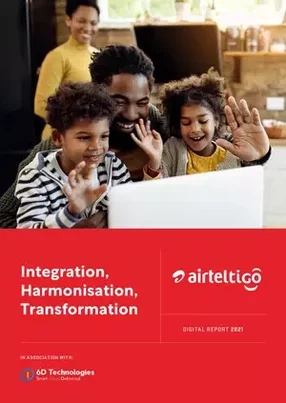When Prince Sarpong was offered the role of Chief Information Officer at the newly-formed AirtelTigo Ghana, he accepted without hesitation. He reflects that not only did he find the “challenge offered by the role to bring together the technical operations of the two companies - Airtel and Tigo - that merged” exciting, but there was also “ the fact that the merger and the subsequent integration process was a historic event.” He laughs, “It's the first merger of its kind in Africa, so I wanted to get my name into the history books.”
Announced in November of 2017, the historic merger between Airtel and Tigo (a subsidiary of Millicom) created the country’s second-largest mobile network operator overnight, combining the two brands into an entity capable, as Sorpong explains, of taking on the dominant player in a highly-competitive market. “ In Ghana, there is a clear, distant leader in the telecom sector. Airtel and Tigo agreed that to be profitable, they needed to attain a certain size of customer base,” he explains. “By coming together to form AirtelTigo Ghana, they were able to combine their customer bases to create a strong number two player in the market that is now capable of competing with the market leader.”
A Historic Merger
Sarpong joined AirtelTigo Ghana at a moment of unprecedented change and opportunity. By bringing together the two discrete brands, the newly-formed AirtelTigo Ghana aimed to “reduce operational costs, create efficiencies, and drive more innovative behaviour in the market,” Sarpong explains. “And so this new company came together with a mandate to integrate, harmonise and transform, in order to be in the best possible position to compete in the future.”
This mandate has formed the foundation of Sarpong’s work over the past few years and represents a three-phase transition from the two companies’ pasts towards a single, unified future. The process, he reflects, wasn’t without its hurdles. In addition to navigating regulatory hurdles put in place by a government that “government didn't want to set a bad precedent for the process” of future mergers, and so set “very strict guidelines with no room for error” that “set us on a very tough regulatory journey,” the process of integrating the tech stacks, operational architectures and different cultures of two companies that, up until that point, had been rivals, required careful consideration.
“I came into an environment in which there were two companies, both with overlapping infrastructure, services, technology, and teams - but with two different cultures and ways of doing things. So, the first step was to integrate the two companies and figure out how to get these two different systems to talk to each other,” he recalls.
Once this integration was completed, the more nuanced task of harmonisation could begin. Sarpong explains that the harmonisation process “was all about choosing between the two versions of each service we now had. You've got two billing systems. Which one do you go for? You have two ERP systems. Which one do you go for? It's a lot of decisions to make to ensure that these two companies can come together as one, and at the end of the day, you can't lose sight of cost and operational efficiency.”
Sarpong gets visibly excited about this next bit. “You've done the integration; you're now talking to each other. You've found the efficiencies where you can, selecting the best offerings from the two entities. And then the third aspect is how to take that next step and start building for the future.”
The future that AirtelTigo Ghana is headed for is one in which the relationship between customer, technology and service provider has been radically redefined. “Customers are very sensitive these days. Gone is the time when they would stay with you no matter what. Now, you can't take those customers for granted,” he explains. For the modern telco, stability, reliability and accessibility are the factors that define whether or not a carrier can stay in business. “You can't be available today and not tomorrow; you need to deliver a consistent experience and operational excellence,” Sarpong emphasises.
Telecom services, he continues, are now a commodity and, in a country like Ghana - where mobile adoption is particularly high, and competition is particularly fierce - only the companies that innovate and leverage their digital ecosystems will survive and thrive. For AirtelTigo, Sarpong explains, this idea is at the very core of the company’s digital transformation strategy - and their commitment has already produced results.
“Our unique selling point is our innovation,” he says. “We innovated to the point that the market leader in Ghana had to follow us. The government actually said 'follow AirtelTigo's innovation' when we launched a service that means our customers' data does not expire. It was such a success that the government has made rollover data a nationwide requirement.”
6D Technologies: Partnering for Success
“Whenever you approach a new area of the business, you have to look at your strengths and your weaknesses. When you're in a situation where the dominant player has deep pockets, and you're maybe not able to compete in certain areas, that's where your partners can step in to strengthen your capabilities. That's where you need to form strategic alliances that allow you to leverage new technologies and integrations.
For us, we want a partner that is nimble, agile, and able to help us go to market quickly.
We wanted our platform to be future-proof and capable of supporting further integrations in the future, so we started looking for a partner that would help us do that.
That's when we found 6D Technologies.
Our relationship with 6D Technologies was a gamble that paid off in a big way. In this industry, it's your value-added services that make or break you as a company, so you need a partner that understands that.
6D Technologies provided us with a Unified VAS platform - from development through to operation - that allows us to pay for a unified license. That means that we don't have to separately purchase license for different VAS service but have the flexibility to transfer licenses from one service to another when the need arise, enabling us to offer affordable value added services to our customers.”
- Prince Sarpong, CIO, AirtelTigo Ghana
Government Muscle
Now, over two years later, AirtelTigo is going through yet another historic transition. In April of 2021, the Ghanaian government announced plans to acquire a 100% stake in the carrier, transforming the privately-owned firm into a state-owned operator.
The acquisition, which came at the end of the transformational journey prompted by the merger, Sarpong explains, has a lot of exciting implications for the future of AirtelTigo Ghana. “It’s really strengthened our position against the market's dominant player,” he says. “Everybody wants to be a government employee, right? You have more muscle behind you - that's how I see it.”
The Ghanaian government controls both the spectrum and regulatory framework in the nation’s telecom sector. Being an extension of that organisation, Sarpong reasons can only result in AirtelTigo providing better services to its customers. “With the government taking over, we see a unique opportunity in that our mandate hasn't changed; they still want us to be innovative, efficient, and competitive in the market. The government has the resources to make the necessary investments to help us compete,” he says.
Building for the Future
As anyone who has ever embarked on a digital transformation well knows, it’s a process that never truly ends. With the successful integration and harmonisation of Airtel and Tigo into a unified entity - as well as a blanket transformation of the company’s legacy IT infrastructure - behind him, Sarpong has his eyes focused firmly on the future. “I see exciting times ahead for AirtelTigo, in terms of having the serious financial muscle of the government supporting us, as well as being a part of the organisation that regulates the country's telecoms industry,” he says.
“For me, the next year is all about building customer confidence.”
Reflecting that, in Ghana and beyond, traditional methods of delivering telecom services are disappearing, Sarpong explains that operators need to leverage new methodologies and cutting edge technology in order to remain competitive. “Now, with our merger completed, we are ready to deliver on those expectations,” he reassures me. “We've opened up our entire ecosystem for integration, for payments, for delivery. This is the future of AirtelTigo. And on top of this open ecosystem, we're incorporating machine learning and AI to be able to understand exactly what it is our customers need and give them targeted services. We've already seen this have a positive effect on customer engagement.” AirtelTigo is moving away from single-channel engagement and towards an omnichannel approach. “We've got what we call the 360-degree initiative, which focuses on the interplay between all our different points of contact with our customers, from the web to social media, SMS and so on. All those communication channels funnel into a single platform, and then, from that platform, we're able to disseminate information across multiple channels. This, combined with our ability to use AI and machine learning to deliver a targeted, unique experience to our customers, is driving engagement and confidence.”
By this time next year, he enthuses, AirtelTigo will have continued to build in its open ecosystem, expanded channels and innovation-first ethos, incorporating analytics powered by AI and machine learning “to ensure that we truly understand our customers' wants and needs.” As a final note, Sarpong adds that “From an infrastructure perspective, we have also done the work to ensure that we are ready to meet the future - and 5G is very much going to be a part of that future.



